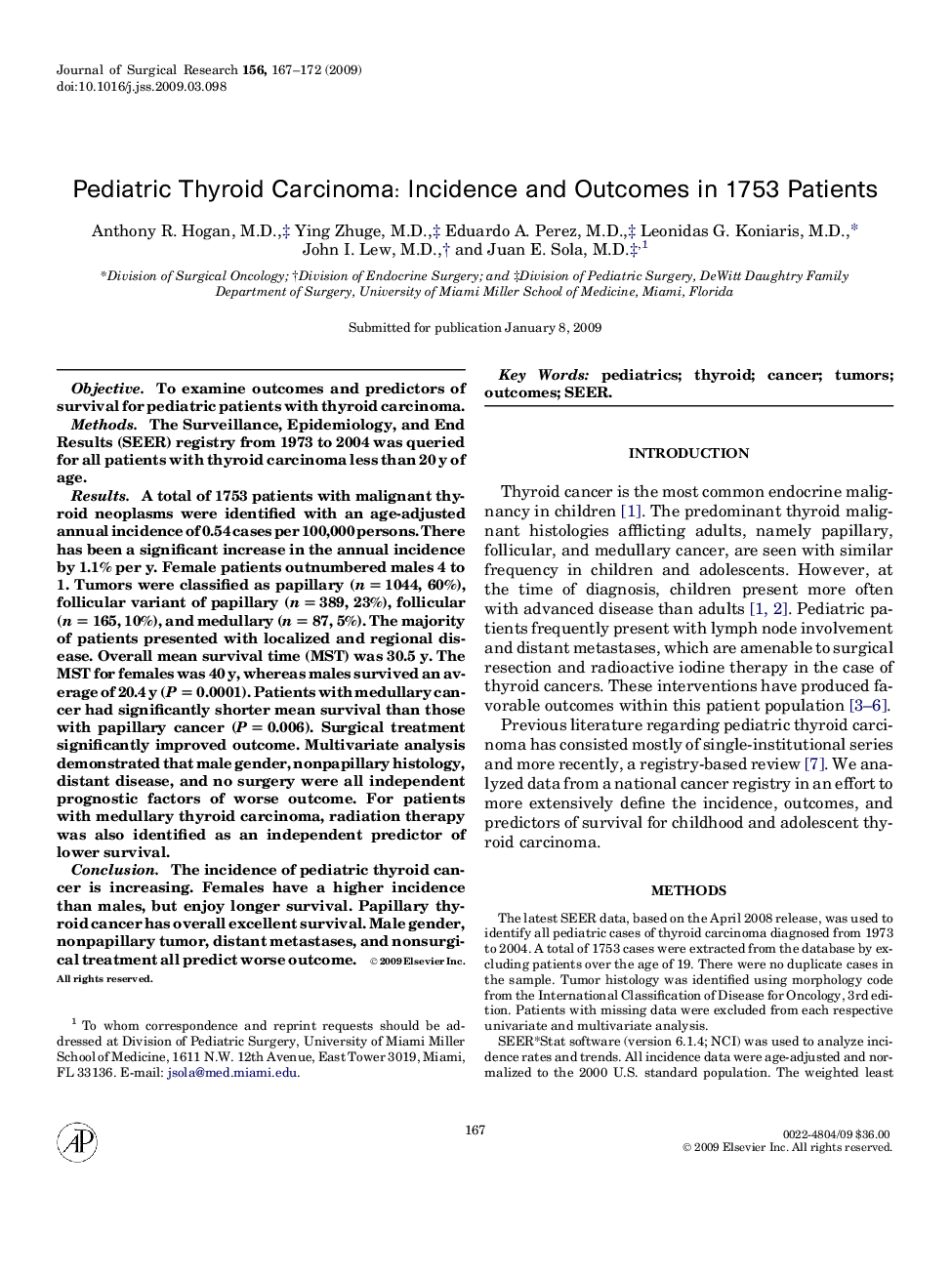| Article ID | Journal | Published Year | Pages | File Type |
|---|---|---|---|---|
| 4303549 | Journal of Surgical Research | 2009 | 6 Pages |
ObjectiveTo examine outcomes and predictors of survival for pediatric patients with thyroid carcinoma.MethodsThe Surveillance, Epidemiology, and End Results (SEER) registry from 1973 to 2004 was queried for all patients with thyroid carcinoma less than 20 y of age.ResultsA total of 1753 patients with malignant thyroid neoplasms were identified with an age-adjusted annual incidence of 0.54 cases per 100,000 persons. There has been a significant increase in the annual incidence by 1.1% per y. Female patients outnumbered males 4 to 1. Tumors were classified as papillary (n = 1044, 60%), follicular variant of papillary (n = 389, 23%), follicular (n = 165, 10%), and medullary (n = 87, 5%). The majority of patients presented with localized and regional disease. Overall mean survival time (MST) was 30.5 y. The MST for females was 40 y, whereas males survived an average of 20.4 y (P = 0.0001). Patients with medullary cancer had significantly shorter mean survival than those with papillary cancer (P = 0.006). Surgical treatment significantly improved outcome. Multivariate analysis demonstrated that male gender, nonpapillary histology, distant disease, and no surgery were all independent prognostic factors of worse outcome. For patients with medullary thyroid carcinoma, radiation therapy was also identified as an independent predictor of lower survival.ConclusionThe incidence of pediatric thyroid cancer is increasing. Females have a higher incidence than males, but enjoy longer survival. Papillary thyroid cancer has overall excellent survival. Male gender, nonpapillary tumor, distant metastases, and nonsurgical treatment all predict worse outcome.
